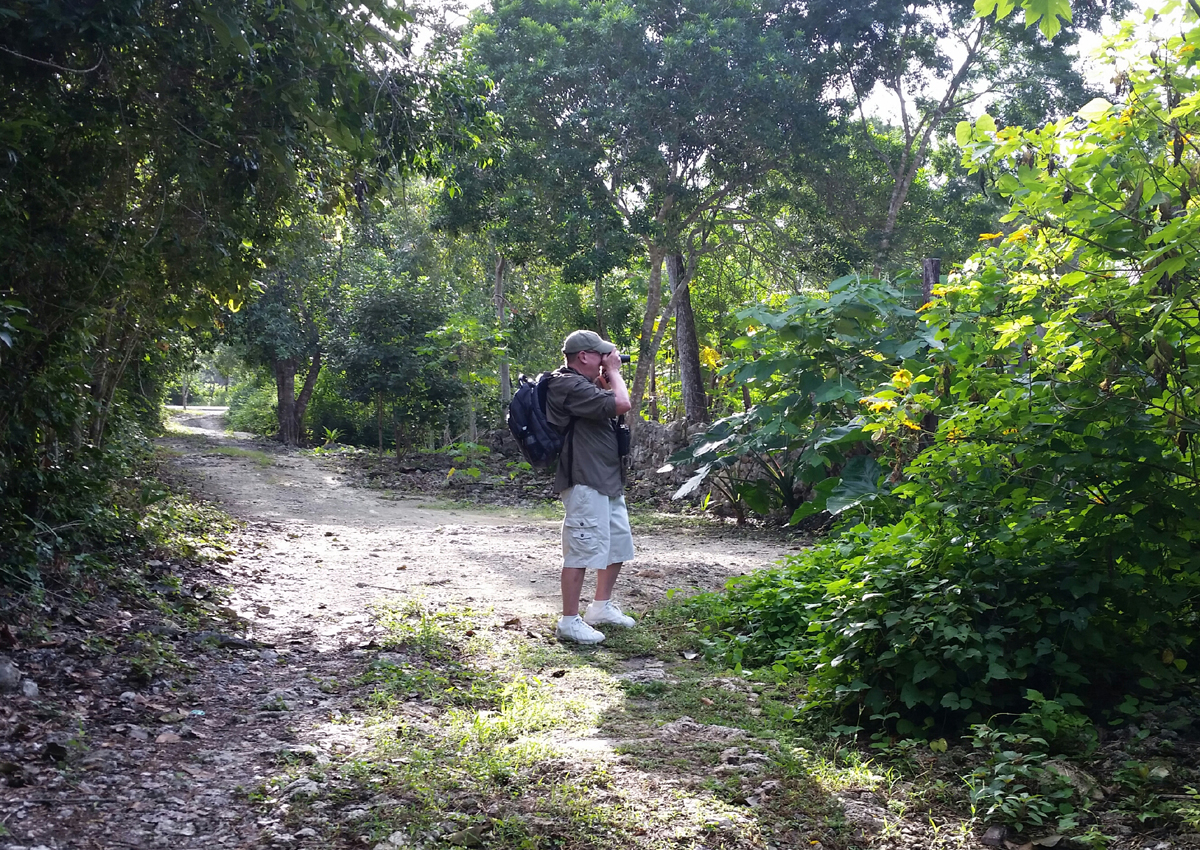Stalking Birds with a Camera in Mayan Muyil

Serious birders don’t expect to get good photos of birds. They perpetually hope for a great picture, but know from experience a meeting with the new bird on one’s life list can be a glimpse and a blur in bad lighting in a dark forest. Google delivers terrific bird photos any time. The birder on the hunt only seeks the thrill of checking off a new name. It’s all on the honor system; the bird-watching scorecard. But we all make the effort of attempting the shot.

Hosting more than half of the bird species in all of Mexico, the Yucatan Peninsula is one of the best regions for bird watching in North America. Some are our neighbors at the Now Jade all-inclusive resort.

Others are a short walk or drive away in the mangroves and jungle around nearby Puerto Morelos. Any back road will lead you to them. They are abundant in mangroves and at cenotes; the underground water-filled caves. The resort even displays photos and profiles around the grounds of birds guests are likely to view.

We arranged for a bird tour through Apple Vacations and were picked up by Eco-Colors-Tour van in the pitch black Yucatan pre-dawn at 5:15am sharp at the Now Jade resort.

The guide, Alberto, and his driver, Lugo, drove us south on route 307 along the Yucatan coast on a 75-mile, hour and a half journey to their favorite hunting ground in Muyil (moo-heel), a village at the edge of the Sian Ka’an (see-onn kahn) Biosphere Reserve; a huge nature preserve south of the famous Mayan ruins of Tulum.

Fellow travelers included a Danish dad and daughter. Dorte works in tourism in Cancun, and her dad Svend was desirous of making the acquaintance of birds unknown in the skies of Denmark.

The trip was timed to arrive just after sunup, when birds are most active on the hunt for bugs. And be mindful the bugs are on the hunt, too, and that mosquito repellent is as useful on a jungle bird hike as binoculars.

Muyil was one of the oldest and longest-inhabited Mayan sites, dating to 350 BCE when Plato and Aristotle were still philosophizing. Now the people who live there in rustic jungle homes often constructed from recycled ancient stones number a couple of hundred.

We walked from the main highway down rural roads of dirt and stone and onto jungle paths, arousing the curiosity of skinny dogs and fat hens and roosters on properties brightened by native bougainvillea and lantana and bright yellow torch Mexican sunflowers decorated with butterflies.

Among the species numbering nearly twenty added to our lists: Orange oriole (pictured), Great kiskade, Yellow warbler, Roadside hawk, Melodious blackbird, Thick-billed kingbird, Red-banded woodpecker, Northern mockingbird, tropical mockingbird and Black-headed trogon. And we viewed a quartet of chatty green parrots passing overhead.

You have my permission to log any small bird that is unidentifiable in a photo as a flycatcher, as there are dozens of different kinds, some of which look so much alike (I am told) that they can only be definitively ID’d by their calls. My best flycatcher photo was actually taken back at the Now Jade resort when I encountered a Tropical kingbird surveying his kingly domain.

Bonus tip: Shortcuts between rural roadways can be ancient stone footpaths through viney underbrush which can conceal poison ivy. Socks and long pants are good choices even in tropical heat. Anita and I wore shorts. We recommend Benadryl cream. 2%. The strong stuff.

It’s always a decadent indulgence to return to the welcoming embrace and the limitless comforts of the all-inclusive with its never-ending buffets and bottomless umbrella drinks.

But a visit to the birds in the Mayan jungle is an experience to become a featured permanent exhibit in the vacation wing of the museum of excellent memories in one’s cerebral cortex.
